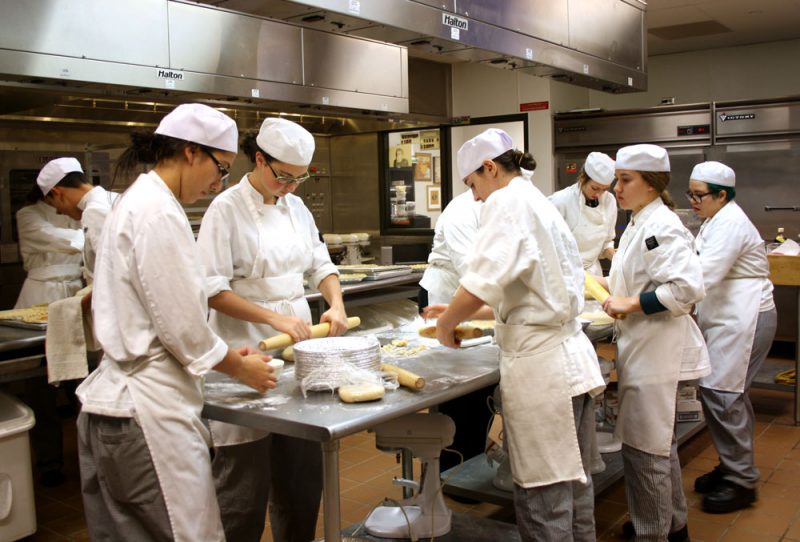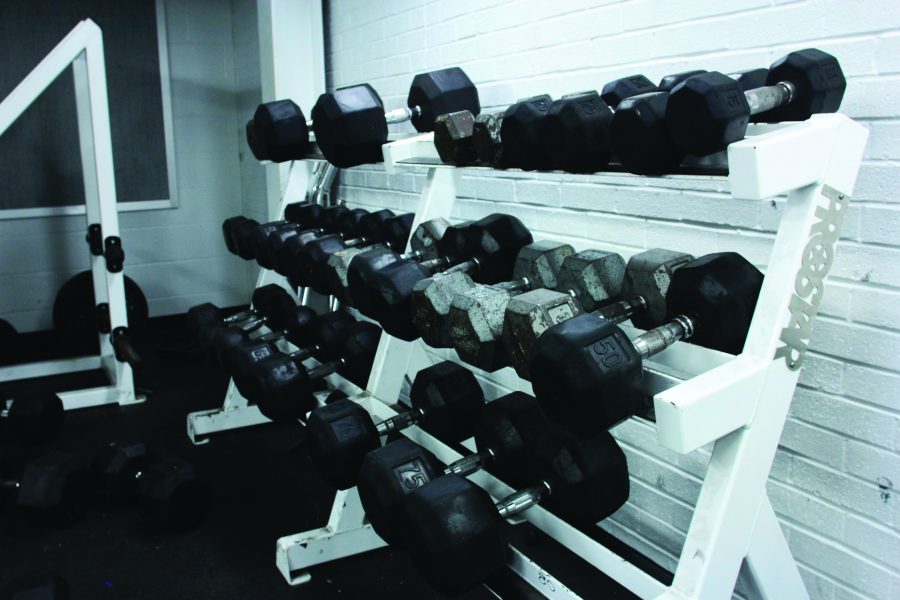When thinking of the people who prepare, package and deliver food, people like to think that those who serve them make it a top priority to keep themselves and their surroundings clean. However, many people have heard horror stories from friends who work at popular fast food restaurants, getting a second-hand education about the gross actuality that exists in the food industry.
Junior Vaughn O’Gorman says he refuses to eat any fast food because of these stories.
“My friends that work at [fast food restaurants] say that the food’s nasty,” he said. “You’re paying, like, a dollar for some freakin’ nasty… Plankton’s Chum Bucket.”
In order to keep these rumors from becoming realities, every person who directly handles food that is sold in the city of Columbia must have a food handler’s card which doesn’t expire until three years later. Even high school students with their first job at a local McDonald’s have to go through the $15 course, but what do the Columbia Area Career Center Culinary Arts students have to go through?
“We don’t do a food handler’s license through the city,” CACC Chef Brook Harlan said. “I think honestly what we have the kids go through is harder than the food handler’s license.”
The rigorous testing process requires that all Culinary Arts I students receive an 85 percent or higher on a sanitation test in order to even step into the kitchen. For the Columbia food handler’s card, applicants are required to sit through an hour-long presentation and a quick check at the end of the class to make sure the students paid attention.
Culinary Arts II, however, is where the students take on a real challenge.
“We have [the students] take a different test, which is the sanitation protocol, kitchen equipment… and they have to get a 90 percent or higher on that one to get into the class,” Harlan said. “They can’t get in the class and actually start doing any kind of knife cuts until they’ve gotten 90 percent or higher on that test, so we’re a little strict with the Culinary II students.”
Senior Bailey Lawson takes both Culinary Arts II and Baking Independent Study.
“Considering we sell to the public, every person that will be in the kitchen, working on that food, needs to know proper sanitation and technique,” Lawson said. “[It’s] definitely necessary.”
After passing all high level qualifications, the future chefs go through an entire unit about safe serving. This expands on the process of distributing food safely, which covers more content than the same one hour Columbia food handler’s license class mentioned above.
This isn’t to say that the Columbia/Boone County Department of Public Health and Human Services isn’t involved with the culinary arts classes.
Kala Tomka, an employee of the department, said that although the local card isn’t required for culinary arts students, they still get inspected. She said that the culinary classes are inspected two times a year to ensure that the students and teachers are safely handling the food they prepare for class.
“[The inspectors] look for proper sanitation methods,” Tomka said. “They need to make sure that the food distributed is safe.”
Culinary Arts II students go through the specific types of food-borne illnesses, the cause of them, and how to prevent them when cooking. This is everything students need to know in order to obtain the National Manager’s food-handling card.
“They actually administer [the card] at [the] Career Center through the professional and communication program,” Harlan said. “That card is good for five years, whereas the [Columbia] food handler’s is only good for three years. If [the students] take the National one, they can take that to any state in the United States.”
All states around the US accept the Serv-Safe National card. This means that once the card is obtained by Culinary Arts students at the Columbia Area Career Center, they are certified around most of the nation to prepare and distribute meals. To obtain this card, applicants have to know the ins and outs of preparing and serving food safely.
Harlan said that taking this class in high school can be beneficial for students who are serious about their career in preparing food. The students can save up to $1,200 in classes when they go to a secondary education culinary school because they will have already gotten the proper cards at the Career Center.
Lawson said the courses she’s taking will help with her life after high school, considering she plans to study hospitality management with an emphasis in food and beverage at the University of Missouri-Columbia.
“You can save and don’t even have to take that class [in some colleges that require very similar courses],” Harlan said. “We’re very lucky.”
By Emily Unterschutz
Culinary students in Baking and Pastry Arts prepare their delicacy of the day on Nov. 18. Although students don’t need to obtain a food handling license through the Columbia /Boone County Department fo Public Health and Human Services, they are required to test for a National Manager’s Food Handling License. Photo by Sury Rawat.
LATEST NEWS
- Stress, anxiety skyrocket as students prepare for upcoming AP tests
- RBHS holds successful night of percussion
- Not even water?
- Solar eclipse to pass through Missouri, April 8
- How CPS is organized: a guide
- City of Columbia to hold school board election April 2
- Youth Election Participants to assist in upcoming municipal election
- City of Columbia hosts first Community Engagement Session for McKinney Building, hopes to gain public insight on the structure’s future
- RBHS Track Team Opener at Battle Gallery
- March Mathness Photo Gallery


























































































